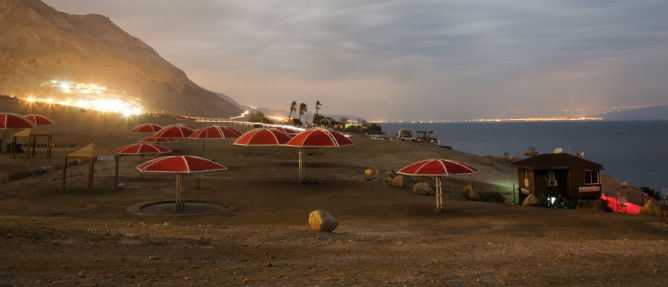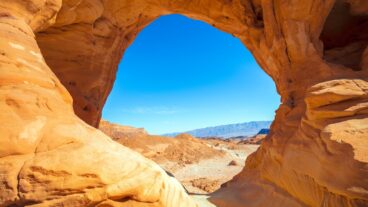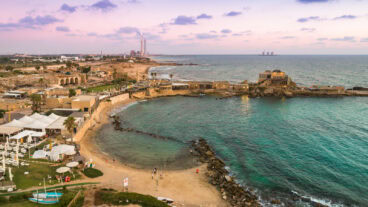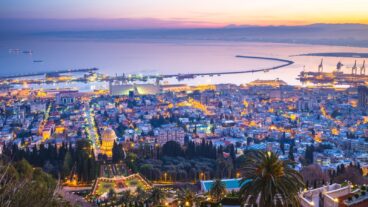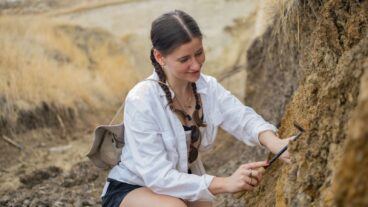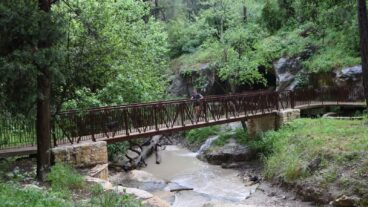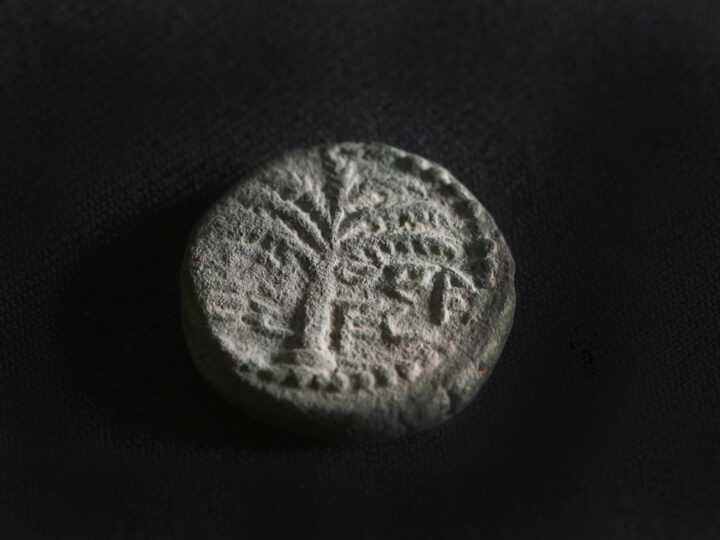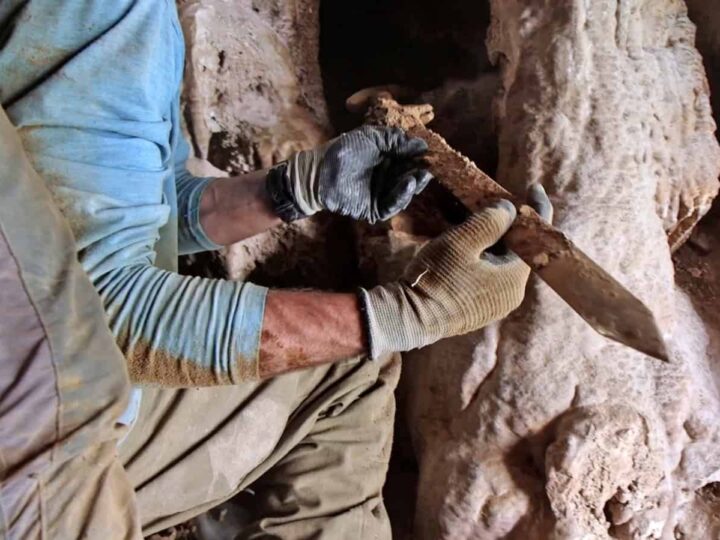If you’ve never been to Ein Gedi, spring is a prime time to explore this Judean Desert nature reserve and national park on the shore of the Dead Sea. It’s surrounded by majestic cliffs and replete with places for hiking, sunbathing, wildlife-watching and relaxing in a hot-spring spa.
A good way to gain a beginners’ appreciation of the panorama, history and archaeology is an hour-long hike to the nature reserve’s lower David Stream (Nahal David), where you’ll get a fantastic vantage point.
“It’s an easy uphill walk with steps and handrails to the waterfalls and water holes,” says Israeli tour guide Mordechai Weiss.
“It’s the most accessible hike in Ein Gedi, even in a wheelchair at its very beginning. There are a number of stations along the way to stop and catch your breath or to take a dip in the water. And be on the lookout for the ever-popular mountain goats and hyraxes.”
Ein Gedi is chockfull of the historical and archaeological remains of its first inhabitants some 5,000 years ago. This is where the young biblical David took refuge from mad King Saul, and centuries later where rebels against Roman oppression fled from Jerusalem.
Spread the Word
• Email this article to friends or colleagues
• Share this article on Facebook or Twitter
• Write about and link to this article on your blog
• Local relevancy? Send this article to your local press
The Qumran caves near Ein Gedi hid the Second Temple-era Dead Sea Scrolls that have lately become an Internet hit since the Israel Museum digitized them. You can arrange a jeep tour to explore this rocky area.
During Roman times, persimmon oil and rare perfumes were produced in Ein Gedi, and its dates were highly prized. Today, tourists from all over the world love Ein Gedi for the hot springs, mineral waters, mud baths, desert climate and healthful bromide-filled air. And the hiking.
Take a hike
The David and Arugot streams flow year-round through deep canyons surrounded by lush vegetation, in sharp contrast to the surrounding desert.
“My personal favorite is the walk to the Arugot,” says Weiss. It’s one of the largest river beds in the Judean Desert, starting near Jerusalem and ending at the Dead Sea.
“The trail leads to the Hidden Waterfall and back. But you need to set aside more time for this hike,” – two to four hours depending on the route you choose.
The Nature Reserve is open weekdays in summer from 8am to 5pm and in winter until 4pm; Sunday-Saturday and Sunday from 9:30am to 3:30pm and on Fridays from 8:30am to 2:30pm.
[scrollGallery id=24 useCaptions=true]
“The park does not allow for entry already one hour before closing time, and you are probably traveling to the area from a distance,” Weiss explains. “The lower David Trail offers you more flexibility with your time, with a number of waterfall and swimming options available after only a few minutes of hiking.”
If you have the time and the stamina, Ein Gedi’s upper David Trail begins at the David Stream and continues up to the Shulamit Spring, theDodim Cave and the Ein Gedi Spring. A fourth-century BCE Chalcolithic temple can be seen along the route.
If you’re up for a really good climb, you can forgo the cable car and make your way up the Snake Path to the top of nearby Masada, the most visited paid tourist site in Israel.
This ancient hilltop fortress was where a band of Jewish men, women and children rebelled against masses of conquering Roman troops during the first century. The hardy rebels ultimately chose mass suicide rather than enslavement, and so Masada has become a symbol of heroism.
Life’s a beach
Tourists from many countries flock to the Dead Sea for its healing mineral-rich waters and mud, which you can slather on at the beach. There are several beaches here, many of them adjacent to hotels at Ein Bokek south of Ein Gedi.
The public beach is just across from the hill where you’ll find the Ein Gedi Hotel, soon to unveil its new spa, and Kibbutz Ein Gedi, which offers guest accommodations as does the Ein Gedi Field School and Hostel and the Ein Gedi Beit Sarah Guest House, run by the Israel Youth Hostel Association.
Kibbutz Ein Gedi, founded in 1953, has a botanical garden with plants and trees indigenous to Israel — such as olive, pomegranate and fig trees — alongside tropical transplants from Madagascar, Australia and Africa. An aromatic garden is filled with biblical perfumed and medicinal plants.
Among the tours and events you can book at Ein Gedi are date tastings and explorations of a synagogue dating back to the Talmudic times1,600 years ago. The centerpiece of the synagogue is a preserved mosaic floor adorned by depictions of desert animals similar to those you can see today.




